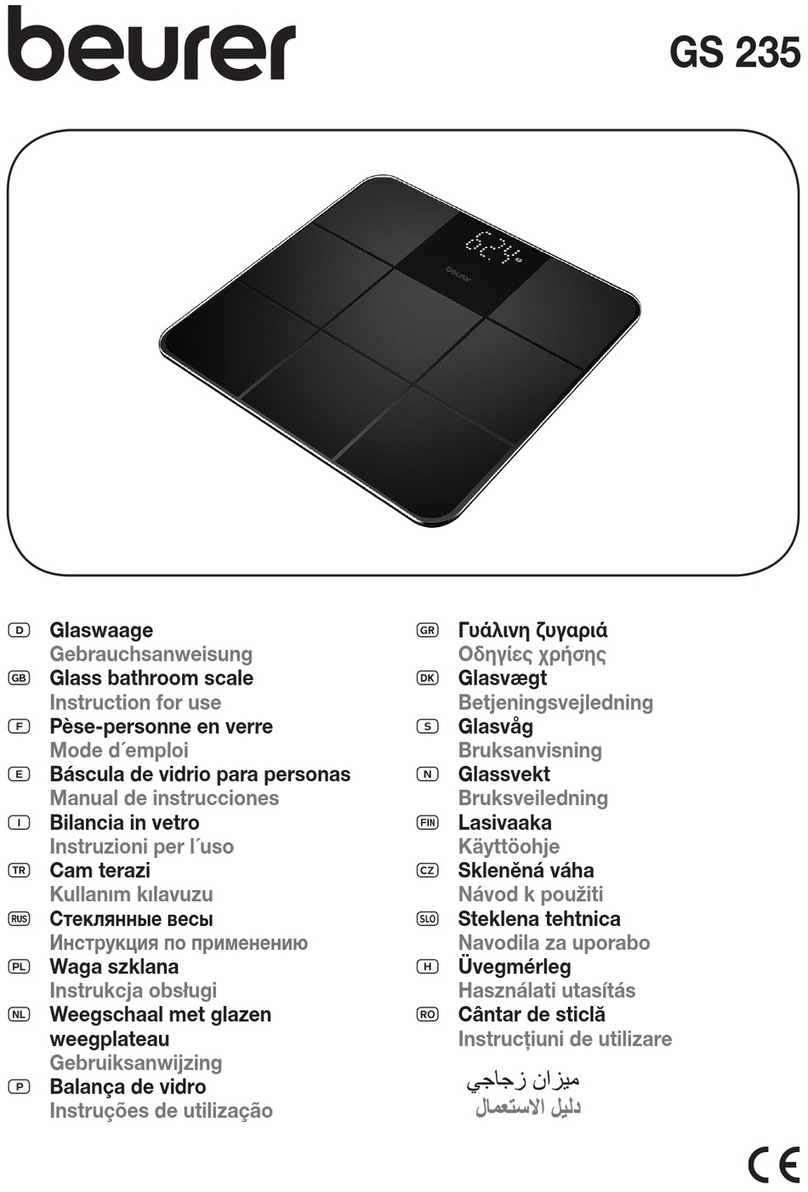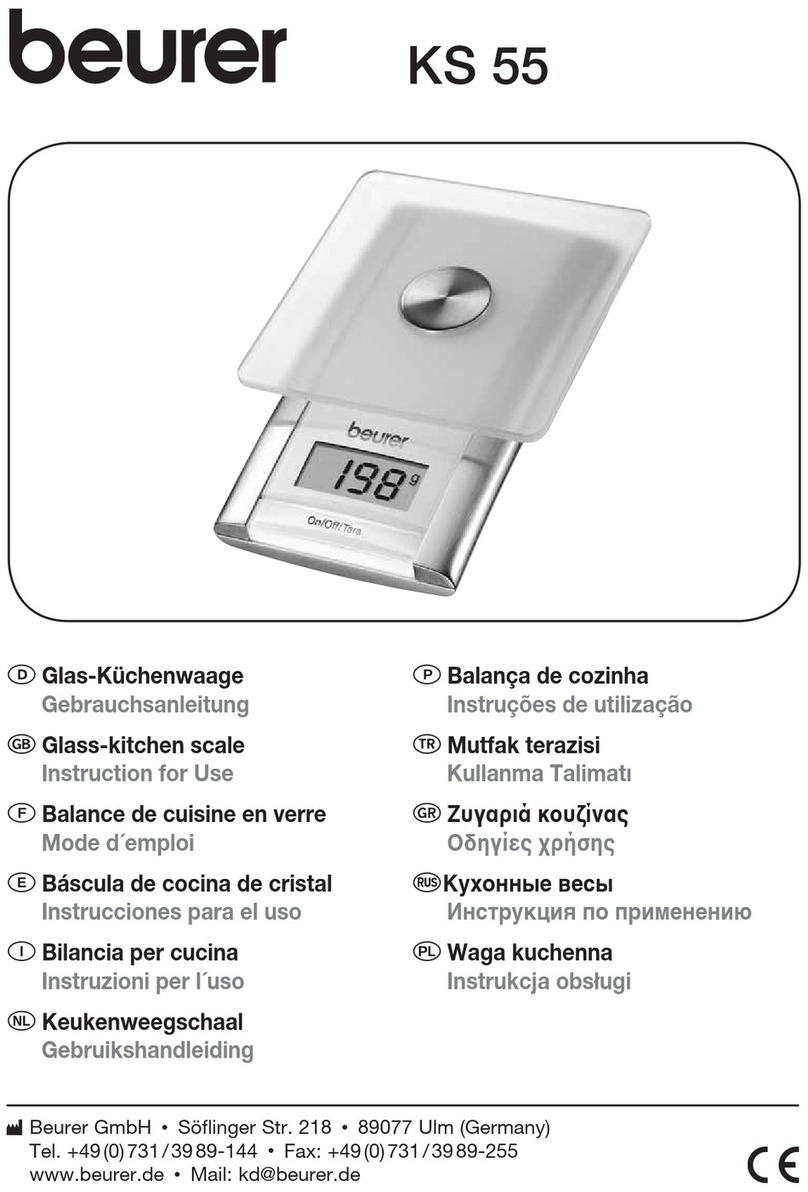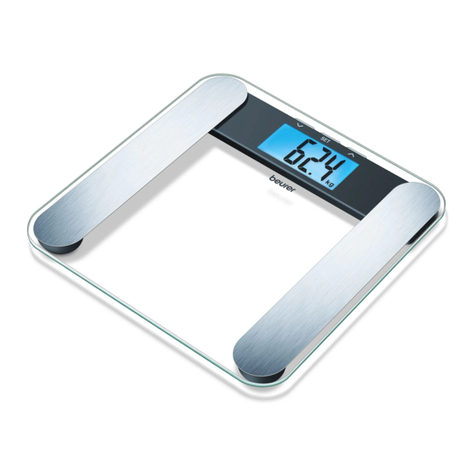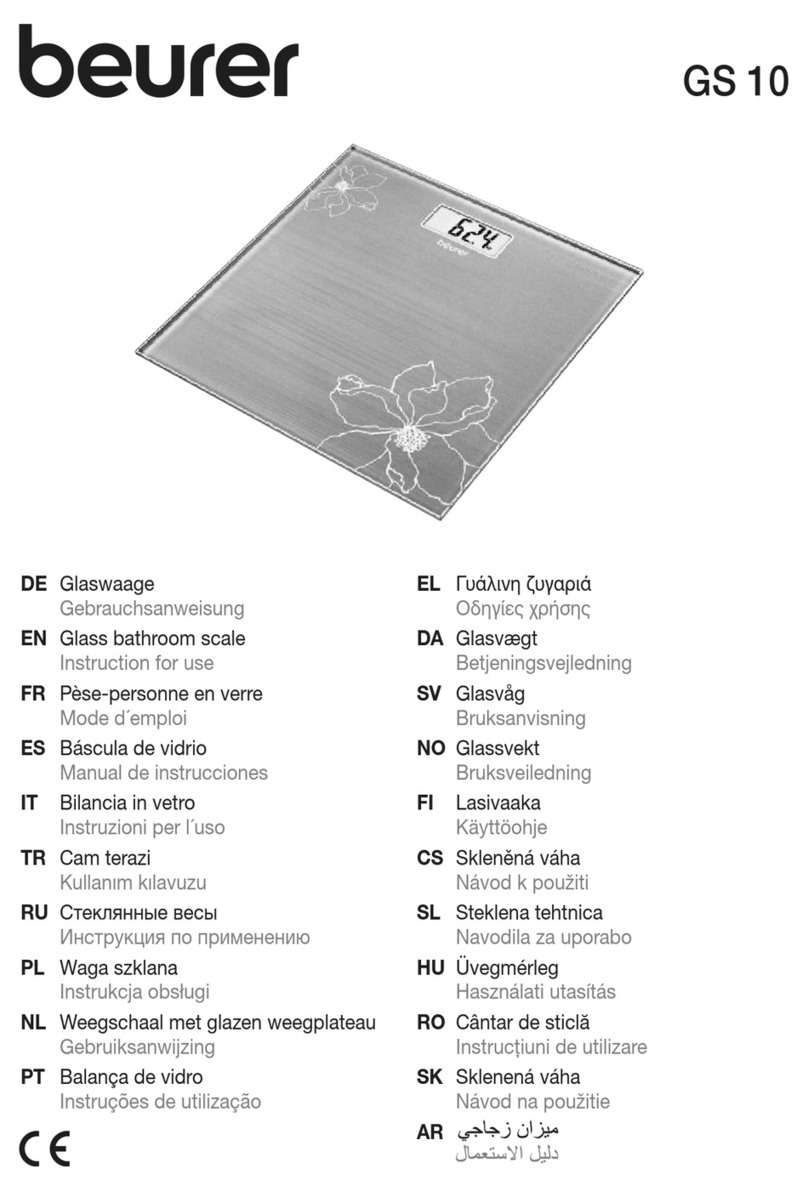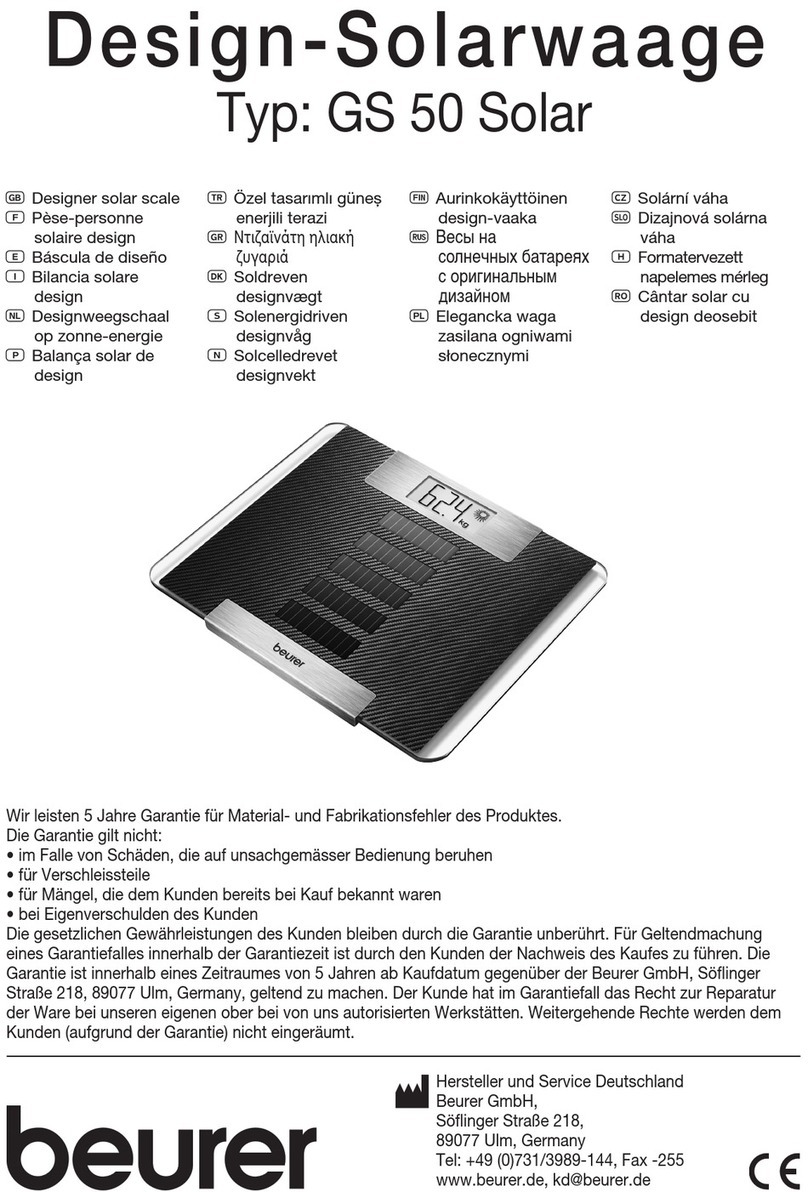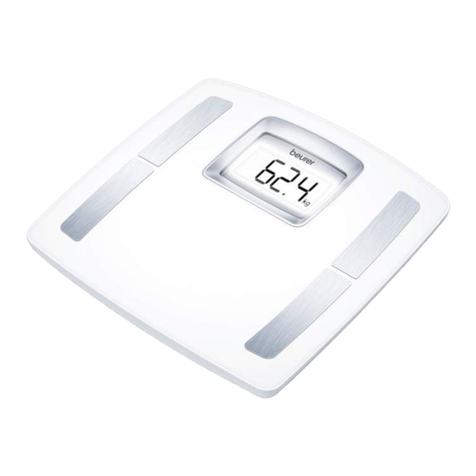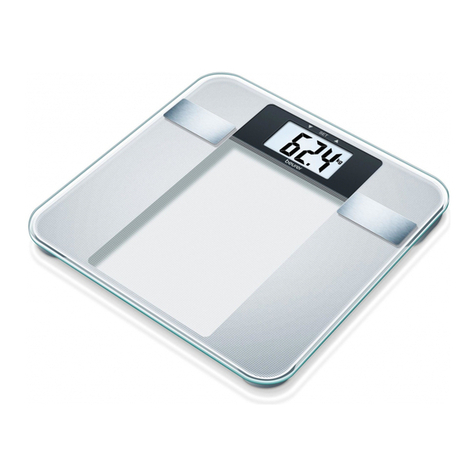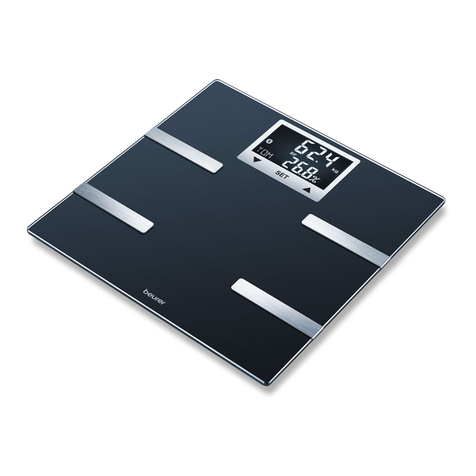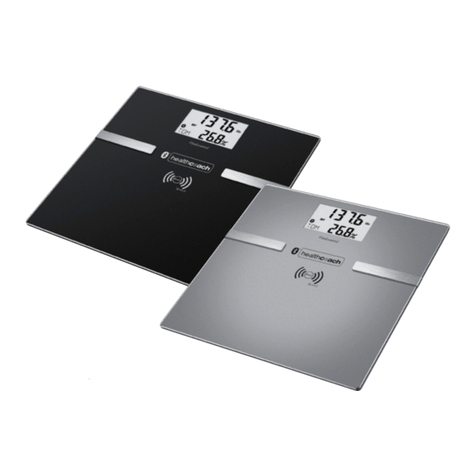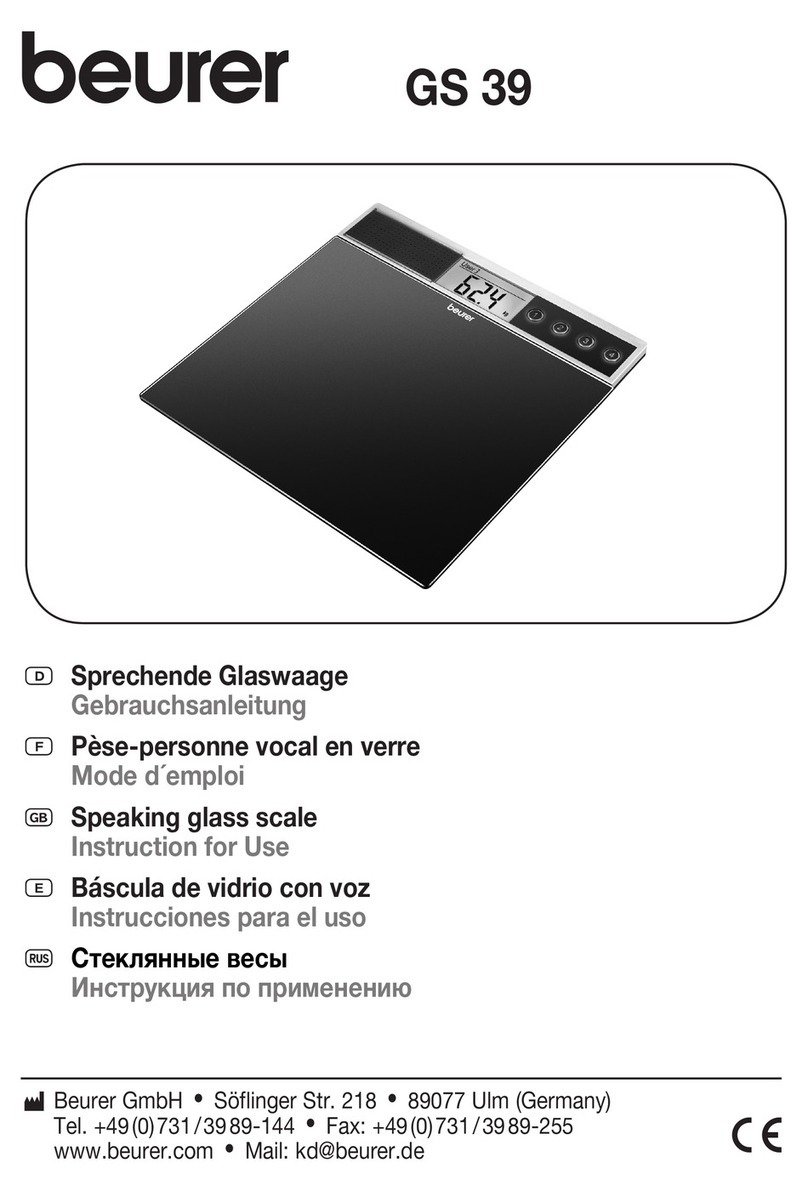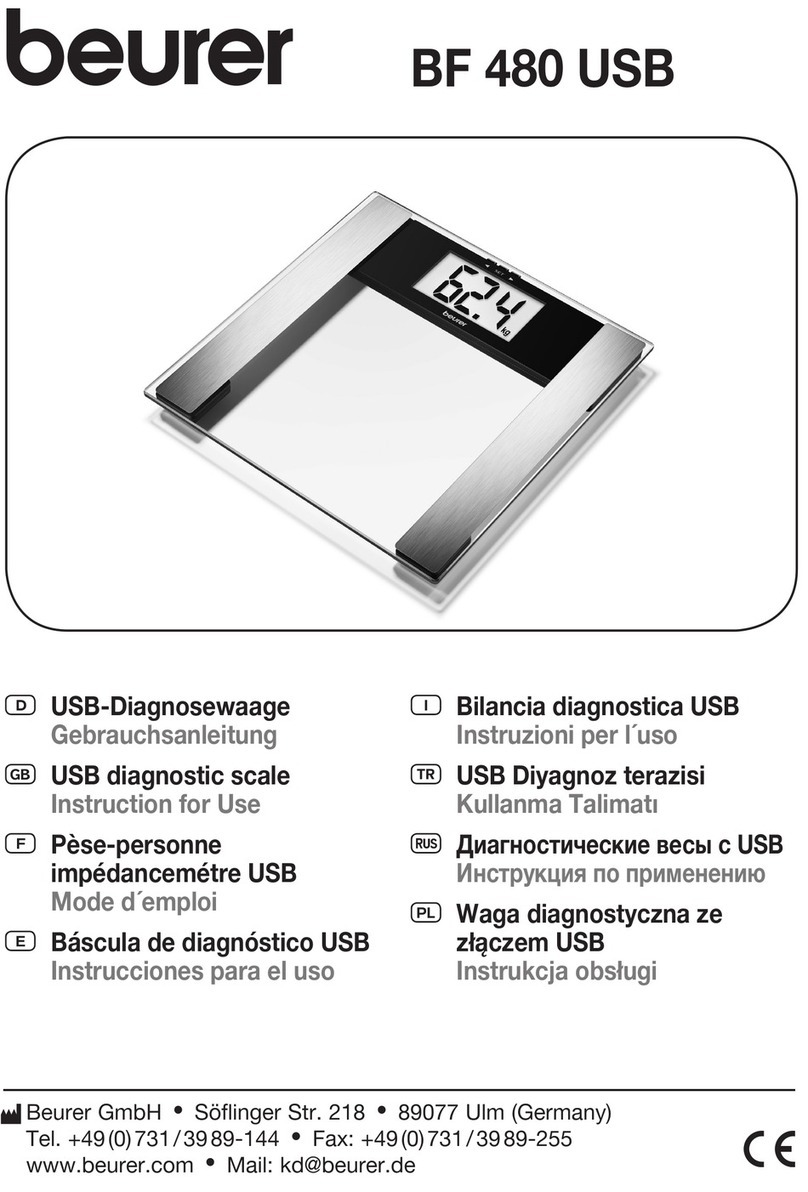
14
• Do not use during pregnancy.
• Do not step onto the outer edge of the scale on just one side: danger of tipping!
• Swallowing batteries can be extremely dangerous. Keep the batteries and scale out of the reach
of small children. Should a battery be swallowed, seek medical assistance immediately.
• Keep packaging material away from children (risk of suffocation).
• Important: do not step onto the scale with wet feet or if the surface of the scale is damp – danger
of slipping!
Notes on handling batteries
• If your skin or eyes come into contact with battery fluid, rinse the affected areas with water and
seek medical assistance.
• Choking hazard! Small children may swallow and choke on batteries. Therefore, store batter-
ies out of the reach of small children!
•Observe the plus (+) and minus (-) polarity signs.
•If a battery has leaked, put on protective gloves and clean the battery compartment with a dry
cloth.
•Protect the batteries from excessive heat.
• Risk of explosion! Do not throw batteries into a fire.
•Do not charge or short-circuit batteries.
•If the device is not to be used for a relatively long period, take the batteries out of the battery
compartment.
•Use identical or equivalent battery types only.
•Always replace all batteries at the same time.
•Do not use rechargeable batteries!
•Do not disassemble, open or crush the batteries.
General notes
• Please note that measuring tolerances are possible for technical reasons, as this scale is not cali-
brated for use in a professional medical context.
•
Ages 10 to 99 years and height settings from 100 to 220 cm (3-03” to 7-03”) can be preset.
• The scale’s maximum capacity is 180 kg (396 lb /28 st). The results for the weight measurement
and bone mass calculation are displayed in 100-g increments (0.2 lb).
• Measurements of body fat, body water and muscle content are displayed in increments of 0.1%.
• The calorie requirement is indicated in increments of 1 kcal.
• When supplied to the customer, the scale is set to weigh and measure in “kg” and “cm”.
On the back of the scale, there is a toggle button where you can select „pounds“ (lb) and „stones“
(st).
• Place the scale on an even, hard surface; a hard surface is crucial for achieving accurate meas-
urements.
• Repairs may only be carried out by Beurer Customer Services or authorised retailers. Before sub-
mitting a complaint, please check the batteries first and replace them if necessary.
Storage and maintenance
The accuracy of the measurements and service life of the device depend on its careful handling:
IMPORTANT
• The device should be cleaned from time to time. Do not use any abrasive cleaning products and
never submerge the device in water.
• Make sure that no liquids come into contact with the scale. Never submerge the scale in water.
Never rinse it in running water.
• Do not place any objects on the scale when it is not in use.
• Do not press the button violently or with pointed objects.
• Do not expose the scale to high temperatures or strong electromagnetic fields (e.g. mobile tele-
phones).
• Protect the device from knocks, damp, dust, chemicals, marked temperature fluctuations and
nearby sources of heat (ovens, heaters).
